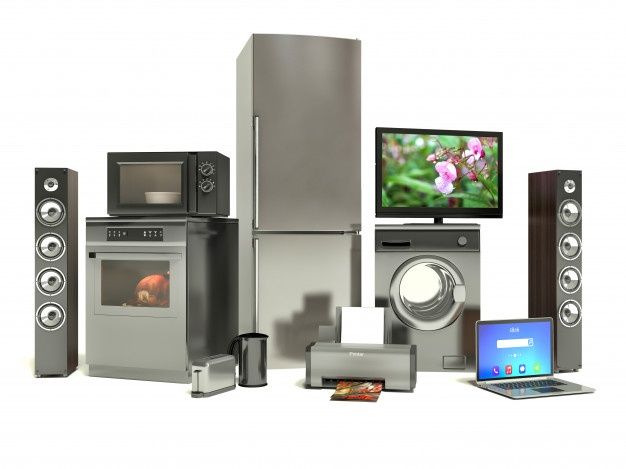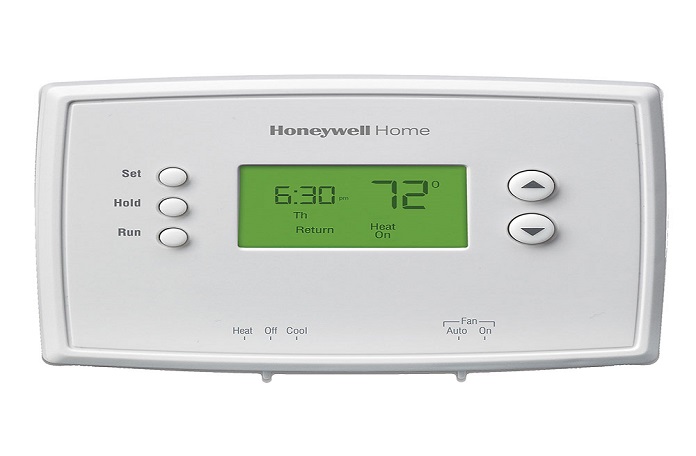
Electric bills can sometimes be a source of surprise and stress. If you’ve been thinking about why your electric bill is so high in 2024, you’re not alone. Several factors can contribute to this, and understanding them is the first step towards reducing your bills. Let’s explain into the details. First of all I will give you reason why your electricity bill increase and then give you some tips which is benefit for you.
Reasons for High Electric Bills
Outdated Appliances
Older appliances often have less efficient motors, outdated insulation, and less sophisticated control systems. Over time, wear and tear can also reduce their efficiency.
- Specifics:
- Refrigerators: Older models can use up to 1,500 kWh per year, while newer models use around 400-600 kWh.
- Washing Machines: Modern front-loading washers use less water and energy compared to older top-loading models.
- Solution: Conduct an energy audit of your home appliances. Replace the most energy-consuming devices first. Look for rebates or incentives for purchasing Energy Star appliances.
Insufficient Insulation
Insulation is critical in maintaining your home’s temperature. Heat naturally moves from warmer to cooler areas, so in winter, it escapes from your home, and in summer, it enters.
- Specifics:
- Attics and Basements: These areas are crucial for insulation. Up to 25% of heat can be lost through the roof, and 20% through the floor.
- Windows and Doors: Poorly sealed windows and doors can lead to significant heat loss.
- Solution: Consider adding insulation to your attic and walls. Use weather stripping and caulk to seal windows and doors. Double-check your home’s R-value (a measure of insulation’s effectiveness) and upgrade if necessary.
High Utility Electricity Rates
Utility rates can fluctuate due to various factors including fuel costs, demand, and infrastructure investments.
- Specifics:
- Peak Demand: Electricity can be more expensive during peak hours when demand is highest.
- Regional Differences: Some areas have higher rates due to local energy policies or lack of competition.
- Solution: If available, switch to a time-of-use plan where you pay less during off-peak hours. Opt for fixed-rate plans to avoid seasonal spikes. Utilize online tools or apps provided by your utility company to track and manage your energy usage.
Inefficient Thermostats
Thermostats control your heating and cooling systems. Inefficiencies can arise from incorrect settings, manual operation, or outdated technology.
- Specifics:
- Smart Thermostats: Devices like Nest or Ecobee can learn your schedule and adjust temperatures automatically.
- Zoning Systems: These can manage heating/cooling in different areas of your home independently.
- Solution: Install a smart thermostat to optimize your heating and cooling schedule. Program it to lower the temperature when you’re not home or at night.
Vampire Appliances
Many devices continue to draw power even when not actively in use. This “standby power” can account for a significant portion of household energy use.

- Specifics:
- Common Culprits: TVs, cable boxes, chargers, and kitchen appliances.
- Solution: Use advanced power strips that cut off power when devices are not in use. Unplug chargers when not needed. Consider using smart plugs that can be controlled via smartphone to turn off devices remotely.
Tips to Reduce Your Electric Bill
There are many tips to reduce electricity bills.
Choose the Right Electricity Plan
In deregulated markets, consumers can select their electricity providers based on rates, customer service, and green energy options.
- Specifics:
- Variable vs Fixed Rates: Variable rates can change month-to-month, while fixed rates remain constant for the contract period.
- Green Energy Plans: Some providers offer plans that source electricity from renewable energy.
- Solution: Research and compare plans using online tools. Make sure the plan you choose matches your household’s energy usage patterns.
Turn Off Unused Electronics
Standby power, also known as “phantom load,” can add up. Each device might use a small amount of power, but collectively, they can contribute significantly to your bill. This is best tips to reduce electricity bills.
- Specifics:
- Entertainment Systems: These often have multiple components that draw power even when not in use.
- Office Equipment: Printers, monitors, and speakers.
- Solution: Organize devices into groups using power strips, and turn off the strip when not in use. Use smart plugs to automate power-off schedules.
Install Ceiling Fans
Ceiling fans help distribute air more evenly, making heating and cooling more efficient.
- Specifics:
- Summer Use: Fans create a wind-chill effect, making you feel cooler. This allows you to set your thermostat to 4°F higher without reducing comfort, which can cut cooling costs by up to 30%.
- Winter Use: Reverse the direction of your ceiling fan clockwise at a low speed to push warm air that rises to the ceiling back down into the room.
- Solution: Install ceiling fans in rooms that you frequently use. It is important to remember to turn off fans when you leave a room, as they cool people, not spaces.
Change Your A/C Air Filters More Often

Air filters in your HVAC system trap dust, dirt, and other particles, helping to keep the air clean. However, they can become clogged over time, reducing airflow and making your system work harder.
- Specifics:
- Frequency: Check and replace filters every 1-3 months, especially during peak usage periods.
- Impact: A clogged filter can increase energy consumption by 5-15%.
- Solution: Set reminders to check and change your air filters regularly. It is recommended that you buy reusable filters that can be cleaned and reused.
Switch to LED Bulbs
Lighting can account for a significant portion of your electricity bill. LED (Light Emitting Diode) bulbs are much more energy-efficient than traditional filament light bulbs or even compact fluorescent bulbs.
- Specifics:
- Energy Savings: LEDs use at least 75% less energy and last 25 times longer than incandescent lighting.
- Cost Savings: Although the initial cost is higher, the long-term savings on your electricity bill and fewer replacements make LEDs cost-effective.
- Solution: Replace incandescent bulbs with LED bulbs in your home. Focus on high-use areas first, such as living rooms, kitchens, and outdoor lighting.
Invest in Energy-Efficient Appliances
Energy-efficient appliances use advanced technologies to reduce energy consumption without sacrificing performance.
- Specifics:
- Energy Star Rating: Look for the Energy Star label, which signifies that the appliance meets or exceeds energy efficiency guidelines set by the U.S. Environmental Protection Agency.
- Examples: Energy-efficient refrigerators, dishwashers, washing machines, dryers, and HVAC systems.
- Solution: When it’s time to replace an appliance, choose an Energy Star-rated model. Calculate the potential energy savings over the appliance’s lifespan to justify the upfront cost.
Properly Insulate Your Home
Insulation is key to maintaining a consistent temperature in your home, reducing the need for heating and cooling.
- Specifics:
- Types of Insulation: Fiberglass, cellulose, spray foam, and rigid foam are common types of insulation, each suitable for different areas of the home.
- Areas to Insulate: Focus on attics, walls, floors, basements, and crawl spaces. Make sure gaps around ducts, windows, and doors are sealed.
- Solution: Conduct an energy audit to identify areas with insufficient insulation. Add or upgrade insulation where needed, and seal leaks with weather stripping or caulk.
Regulate Indoor Heating and Cooling Temperatures
Efficient temperature regulation can significantly reduce energy consumption.

- Specifics:
- Optimal Settings: The U.S. Department of Energy recommends setting your thermostat to 78°F in summer and 68°F in winter while you are home and awake. Lower it by 10-15°F for 8 hours a day to save up to 10% a year on heating and cooling.
- Zone Heating/Cooling: Use zoning systems or individual room controls to avoid heating or cooling unused areas.
- Solution: Adjust your thermostat settings according to your daily routine. Use programmable or smart thermostats to automate these changes.
Additional Strategies to Reduce Your Electric Bill
Utilize Natural Light
Maximize the use of natural light to reduce the need for artificial lighting during the day.

- Specifics:
- Window Treatments: Use light-colored window treatments to reflect light into the room. Allow sunlight to enter your home during the day by opening curtains or blinds.
- Skylights and Solar Tubes: Install skylights or solar tubes in dark areas of your home to bring in natural light.
- Solution: Arrange your furniture and workspace
Optimal Times to Use Electricity
Off-Peak Hours
- Late Night to Early Morning: Typically, off-peak hours range from about 9 PM to 7 AM. Using major appliances like dishwashers, washing machines, and dryers during these times can lead to significant savings.
Midday Flexibility
- Mid-Peak Hours: If your utility provider has a mid-peak category, these periods might offer moderate savings. Typically, these hours are around mid-morning to early afternoon (e.g., 10 AM to 2 PM).
Practical Tips for Shifting Electricity Usage
- Washing Machines and Dryers: Run these appliances overnight or early in the morning.
- Dishwashers: Set your dishwasher to run after 9 PM or before 7 AM.
- Electric Vehicle (EV) Charging: Charge your EV overnight when rates are lowest.
- Smart Thermostats: Program your thermostat to pre-cool or pre-heat your home during off-peak hours and maintain the temperature during peak hours.
- Timers for Water Heaters: If you have an electric water heater, use a timer to heat water during off-peak periods.
- Stagger Usage: If you must use high-energy appliances during peak hours, avoid using them all at once. This can prevent your overall demand from spiking, which is beneficial in some billing structures.
Real-World Examples
Example 1: Summer Weekday Schedule
- Peak Hours: 2 PM – 8 PM
- Mid-Peak Hours: 10 AM – 2 PM
- Off-Peak Hours: 8 PM – 10 AM
To save money, you could:
- Run the dishwasher at 9 PM.
- Do laundry overnight or early in the morning.
- Pre-cool your home before 2 PM and maintain the temperature during peak hours using fans.
Example 2: Winter Weekday Schedule
- Peak Hours: 7 AM – 9 AM and 4 PM – 7 PM
- Mid-Peak Hours: 9 AM – 4 PM
- Off-Peak Hours: 7 PM – 7 AM
To save money, you could:
- Use the washing machine and dryer overnight or during mid-peak hours.
- Schedule your water heater to heat water between 7 PM and 7 AM.
- Pre-heat your home before 7 AM and maintain minimal heating during peak periods.
Additional Considerations
Smart Home Technology
- Smart Plugs: Use smart plugs to schedule when devices turn on and off.
- Energy Monitoring: Invest in an energy monitoring system to understand your usage patterns better and identify areas for improvement.
Utility Provider Tools
- Usage Alerts: Some providers offer alerts to notify you when you’re approaching a peak usage period.
- Billing Analysis: Review your bill to see if changing your habits has led to savings.
By understanding and leveraging TOU rates, you can strategically plan your electricity usage to minimize costs. Always check with your specific utility provider for the most accurate information on peak,
Follow on LinkedIn
[…] incorporating these energy-saving tips into your daily routine, you can enjoy reduced electricity bills while also contributing to environmental sustainability. Start small and gradually adopt more […]